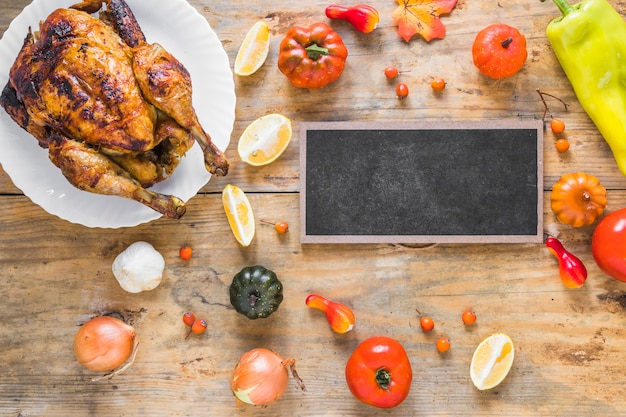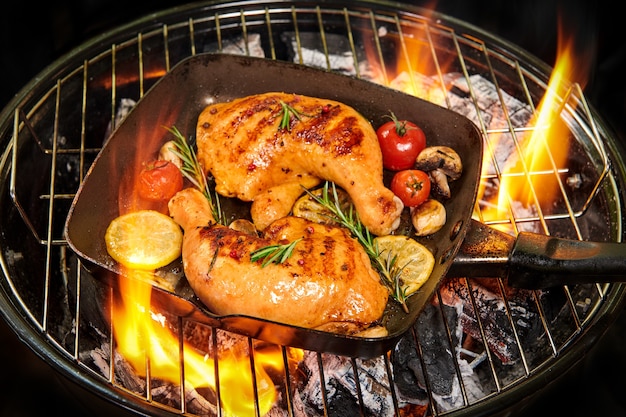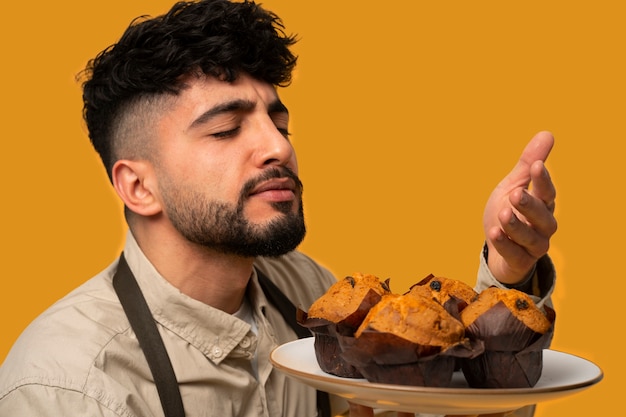As a seasoned grill enthusiast, I've spent countless hours perfecting my chicken grilling technique. There's nothing quite like the satisfying sizzle of chicken on the grill, and the aroma of smoky, juicy meat wafting through the air. But let's be honest, mastering the art of grilling chicken is more than just flipping it over a hot fire. It's about understanding the crucial role of temperature and finding that sweet spot that delivers juicy, flavorful results, every time.
I've learned through experience that a good grill master relies on more than just a fancy thermometer and a cookbook's instructions. It's about trusting your senses, understanding the nuances of different cuts of chicken, and adapting your techniques based on what your grill tells you. So, let's dive into the world of grill temperatures and chicken, exploring the secrets to achieving that perfect balance of crispy skin and tender, juicy meat.
(Part 1) The Lowdown on Grilling Temperatures: Creating the Perfect Zones

Before we get to the chicken, let's talk about the grill itself. When it comes to controlling the temperature for a juicy chicken, I'm a firm believer in gas grills. Don't get me wrong, charcoal grilling has its charm, but for achieving precise temperature control, gas grills are the way to go.
The Two-Zone Advantage
Here's the key to grilling perfect chicken: Think about your grill not as a single heat source, but as a two-zone powerhouse. This concept involves creating a hot zone, where you'll sear your chicken to perfection, and a cool zone, where you'll gently finish it off.
The hot zone is your fiery friend, the one that creates that irresistible crust and sears in the flavors. We're talking about high heat, around 450-500 degrees Fahrenheit (232-260 degrees Celsius). You don't need to crank the heat to the highest setting, but the hot zone should feel like a good, strong flame.
Now, picture the cool zone as a peaceful oasis. This area should be around 300-350 degrees fahrenheit (149-177 degrees Celsius), providing a gentle heat that helps cook the chicken through without drying it out. Think of it as a safe haven for your chicken after the initial grilling party.
(Part 2) Deconstructing the Chicken: Understanding Anatomy for Juiciness

Now, let's shift our focus to the star of the show: the chicken itself. Just like a good chef understands the ingredients, a grill master needs to appreciate the anatomy of a chicken to understand how it cooks and why temperature matters so much.
Bone-In vs. Boneless: The Heat Retention Game
First things first, we need to decide whether we're working with bone-in or boneless chicken. Bone-in chicken, like thighs and drumsticks, tend to hold onto moisture better. The bone acts like a little heat conductor, helping to retain the heat and prevent the meat from drying out.
Boneless chicken, on the other hand, cooks faster and can dry out more quickly. That's why you'll need to adjust your grilling time accordingly, paying close attention to ensure it's cooked through without becoming dry.
The Tale of Two Cuts: chicken breast vs. Thigh
Now, let's talk about the different cuts of chicken, each with its own personality and grilling requirements. chicken breasts, those lean and often dry little devils, require a bit more attention. They cook faster than thighs and can easily become dry if you're not careful.
But then there's the hero of the grill, the chicken thigh. With its juicy, flavorful flesh and forgiving nature, it's a grill master's best friend. chicken thighs are packed with more collagen and protein, making them naturally more moist and resilient. They can withstand higher temperatures and longer cooking times without drying out, making them a truly versatile ingredient.
(Part 3) The Grill Temperature for juicy chicken breasts: A Precise Dance Between Heat and Time

Okay, let's get down to business. You've chosen your chicken breasts, you've got your grill prepped, and you're ready to conquer those juicy beauties. Here's how we'll achieve that perfect balance of crispy skin and tender meat.
The Initial Sear: Crafting a Golden Crust
The first step is the initial sear, a crucial moment in the grilling process. This is where we crank up the heat to about 450-500 degrees Fahrenheit (232-260 degrees Celsius) and let those chicken breasts sizzle over the hot zone for 3-4 minutes per side. The goal is to create that irresistible, golden-brown crust, a sign that the meat is starting to caramelize and develop a beautiful flavor. Don't rush this step; let the chicken do its thing without excessive flipping.
Finishing Up in the Cool Zone: Ensuring Tenderness
Once the breasts have been seared and have developed that golden crust, it's time to move them to the cool zone. Turn the heat down to about 300-350 degrees Fahrenheit (149-177 degrees Celsius) and let those beauties cook through, about 8-10 minutes per side, depending on their thickness.
It's tempting to think that you've done enough at this point, but remember, we're not just aiming for a good sear, we're aiming for juicy, tender chicken. That's why this gentle cooking in the cool zone is crucial. If you're unsure if the chicken is cooked through, use a meat thermometer. It should register an internal temperature of 165 degrees Fahrenheit (74 degrees Celsius).
(Part 4) The Grill Temperature for juicy chicken thighs: Embracing the Heat
Now, let's talk about the real stars of the grill: chicken thighs. These are the meaty, flavorful beauties that can withstand higher temperatures and longer cooking times without drying out. They're the perfect cut for grill masters who aren't afraid to embrace the heat.
Searing Those Thighs: Building a Smoky Crust
Just like with the chicken breasts, we'll start with a hot sear. Set your grill to about 450-500 degrees Fahrenheit (232-260 degrees Celsius) and let those thighs sizzle over the hot zone for 5-6 minutes per side. The goal is to create that delicious caramelized skin and build a smoky crust that will seal in the juices. Remember to avoid flipping them too often; patience is key in this step.
Finishing in the Cool Zone: A Gentle Transition to Perfection
After the sear, move your chicken thighs to the cool zone, where the temperature is about 300-350 degrees Fahrenheit (149-177 degrees Celsius). Let them cook for another 10-12 minutes per side, or until the internal temperature reaches 165 degrees Fahrenheit (74 degrees Celsius).
Chicken thighs are more forgiving than breasts, so you can cook them a bit longer if you prefer a more well-done texture. But remember, the goal is to keep them juicy and tender, so don't go overboard.
(Part 5) Secrets to Juicy Chicken: Beyond Temperature
Let's be honest, nobody wants dry, rubbery chicken. Besides the perfect grill temperature, there are a few other secrets to ensure your chicken stays juicy and delicious.
Marinating Magic: A Flavor Infusion
A good marinade is like a spa day for your chicken, infusing it with flavor and helping it retain moisture. You'll want to use a marinade with acidic ingredients, such as lemon juice, lime juice, or vinegar. These ingredients work their magic by breaking down the protein in the chicken, making it more tender and receptive to flavor.
One of my favorite marinade recipes includes olive oil, lemon juice, garlic, fresh herbs like rosemary and thyme, a pinch of salt, and a sprinkle of black pepper. Let the chicken soak in the marinade for at least 30 minutes, or better yet, overnight. The longer it marinates, the more flavorful and tender it will become.
Brining for Extra Juiciness: A Moisture Boost
Brining is a bit more involved than marinating, but it's a serious contender for achieving ultra-juicy chicken. This involves soaking the chicken in a salt-water solution, which helps to draw moisture into the meat. The result? Chicken that's incredibly juicy and flavorful.
I usually brine my chicken for about 30 minutes to an hour, but you can do it for longer if you want. Just make sure to pat the chicken dry before grilling to prevent it from steaming instead of searing.
Don't Overcook it: The Golden Rule of Juiciness
It's tempting to keep grilling that chicken until it's completely dry, but resist the urge! Overcooked chicken is dry, tough, and unappetizing. Use a meat thermometer to make sure it's cooked through without going overboard.
Resting is Key: Allowing Juices to Redistribute
Once your chicken is cooked, let it rest for 5-10 minutes before carving it up. This allows the juices to redistribute throughout the meat, resulting in a juicier, more flavorful chicken.
(Part 6) Grilling Temperature Tips and Tricks: Mastering the Art
Now, let's talk about some practical tips and tricks for achieving that perfect grill temperature. These are the subtle nuances that can make all the difference in your grilling game.
Using a Thermometer: A Tool for Precision
I know, I know, I said to trust your senses, but a good meat thermometer is an invaluable tool when it comes to grilling chicken. It takes the guesswork out of cooking and ensures that your chicken is cooked through without being overcooked.
Adjusting the Heat: Listening to Your Grill
Remember, gas grills are all different, so you'll need to experiment a little to find the right settings for your specific grill. Don't be afraid to adjust the heat as needed. And, trust your senses! If the grill seems too hot, turn it down. If it seems too cool, turn it up. It's all about finding that sweet spot for your chicken.
Don't Overcrowd the Grill: Space for Success
Give your chicken some breathing room! If you overcrowd the grill, the temperature will drop, and your chicken won't cook evenly. This can lead to uneven cooking and dry spots, so make sure to leave enough space between your chicken pieces.
Keeping the Grill Clean: A Foundation for Success
A clean grill is a happy grill. Make sure to clean your grill grates before and after each use. This will prevent food from sticking and will help to maintain consistent heat distribution, which is key for evenly cooked chicken.
(Part 7) What to Serve with grilled chicken: Complementary Flavors
Now, let's talk about what to serve with your perfectly grilled chicken. The possibilities are endless, but here are a few of my favorites that will create a truly memorable meal.
Summer Salads: Light and Refreshing
A refreshing summer salad is a perfect complement to grilled chicken, adding a touch of lightness and vibrant flavor. Think quinoa salads with roasted vegetables, mixed greens with grilled corn and avocado, or a simple tomato and cucumber salad with a tangy vinaigrette.
Roasted Vegetables: Smoky and Delicious
Roasted vegetables like asparagus, broccoli, or zucchini add a nice smoky flavor and complement the chicken beautifully. The roasting process brings out their natural sweetness and creates a satisfying contrast in textures.
Grilled corn on the cob: A Summer Classic
grilled corn on the cob is a classic side dish that's always a crowd-pleaser. Just brush the corn with olive oil, season with salt and pepper, and grill it over medium heat for 10-12 minutes, turning it occasionally. The result? Sweet, smoky corn that's bursting with flavor.
potato salad: Creamy and Comforting
A creamy potato salad is another great option for a summer barbecue, offering a comforting and satisfying element to your meal. I like to use a simple recipe with red potatoes, mayonnaise, mustard, celery, and onion, but feel free to experiment with your favorite ingredients.
Grilled Peach Skewers: Sweet and Savory
For a sweet and savory combination, try grilling peach skewers. Simply thread the peaches onto skewers, brush them with honey, and grill them for 2-3 minutes per side, or until they're softened and slightly caramelized. The sweetness of the peaches complements the savory chicken beautifully, creating a delicious contrast of flavors.
(Part 8) FAQs: Answering Your Grilling Questions
You've got questions, I've got answers. Let's get into some common questions about grilling chicken.
What happens if I overcook the chicken?
Overcooked chicken will be dry, tough, and unappetizing. It's a common mistake that can be avoided by using a meat thermometer and by paying close attention to the cooking time. Remember, chicken is done when it reaches an internal temperature of 165 degrees Fahrenheit (74 degrees Celsius).
Can I grill chicken at a lower temperature?
Yes, you can absolutely grill chicken at a lower temperature, but it will take longer to cook. If you're grilling chicken breasts at a lower temperature, you'll need to cook them for about 15-20 minutes per side. Chicken thighs will take about 20-25 minutes per side. Just be sure to monitor the chicken closely to ensure it's cooked through without drying out.
What are some good marinades for chicken?
The possibilities are endless, but here are a few of my favorites:
- Lemon-herb marinade: Olive oil, lemon juice, garlic, herbs like rosemary and thyme, salt, and pepper. This marinade delivers a bright, citrusy flavor and a fragrant aroma.
- Honey-soy marinade: Honey, soy sauce, ginger, garlic, and a pinch of red pepper flakes. This marinade creates a sweet and savory glaze that's both flavorful and slightly spicy.
- Citrus-ginger marinade: Orange juice, lime juice, ginger, garlic, soy sauce, and a pinch of sesame oil. This marinade is a blend of citrusy sweetness and ginger's warming spice, creating a unique and delicious flavor profile.
How can I tell if the chicken is cooked through?
The best way to tell if chicken is cooked through is to use a meat thermometer. It should register an internal temperature of 165 degrees Fahrenheit (74 degrees Celsius). You can also check if the juices run clear, and if the chicken is firm to the touch.
How do I keep the chicken from sticking to the grill?
To prevent sticking, make sure your grill grates are clean. You can also brush the grates with a little bit of olive oil before grilling. And, don't overcrowd the grill! Give your chicken some space to breathe.
(Part 9) Grilling Chicken: A Journey of Discovery
There you have it, folks. My comprehensive guide to grilling the perfect, juicy chicken. Remember, grilling is a journey, not a destination. It takes time, practice, and a bit of trial and error. But with a little patience and a whole lot of passion, you'll be grilling juicy chicken like a pro in no time. So, fire up the grill, grab your chicken, and get ready to cook!
Everyone is watching

Perfect Rice Every Time: The Ultimate Guide to Cooking Rice
Cooking TipsAs a self-proclaimed foodie, I've always been a bit obsessed with rice. It's the foundation of countless cuisi...

Prime Rib Roast Cooking Time Chart: Per Pound Guide
Cooking TipsPrime rib roast. Just the name conjures images of lavish dinners, crackling fires, and hearty laughter. It’s ...

The Ultimate Guide to Cooking Asparagus: Tips, Techniques, and Recipes
Cooking TipsAsparagus. The mere mention of this spring delicacy conjures up images of vibrant green spears, crisp and burs...

Ultimate Guide to Cooking the Perfect Thanksgiving Turkey
Cooking TipsThanksgiving. Just the word conjures up images of overflowing tables laden with delicious food, the scent of r...

How Long to Bake Potatoes in the Oven (Perfect Every Time)
Cooking TipsBaked potatoes are a staple in my kitchen. They're incredibly versatile, delicious, and surprisingly easy to m...
